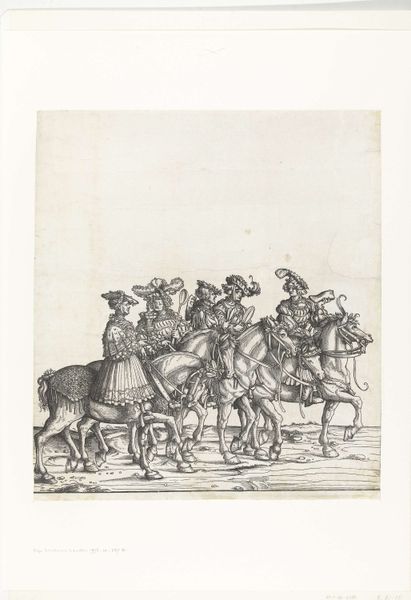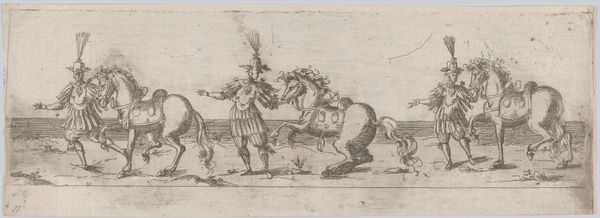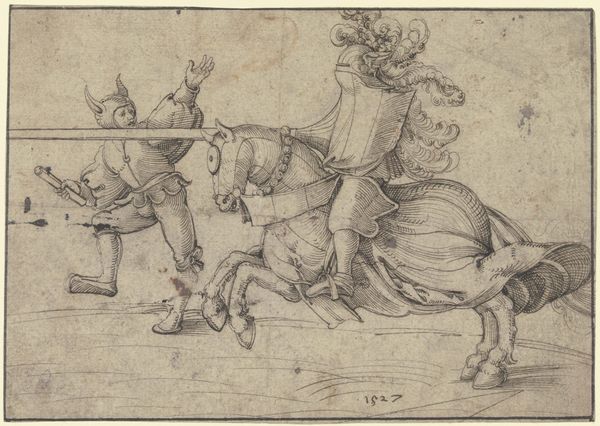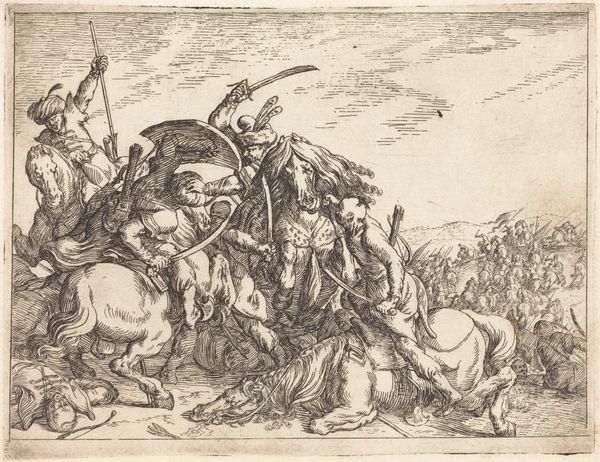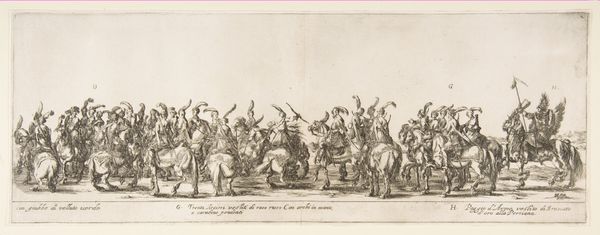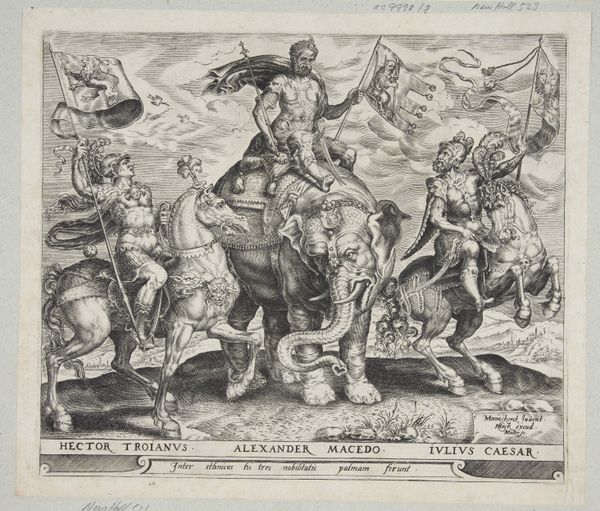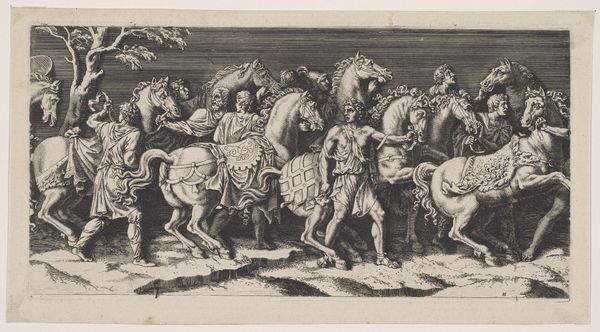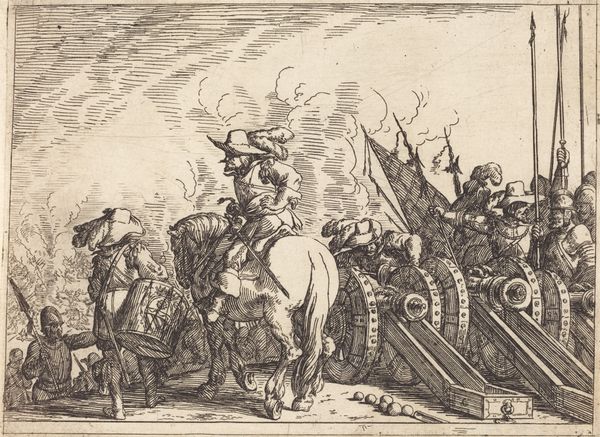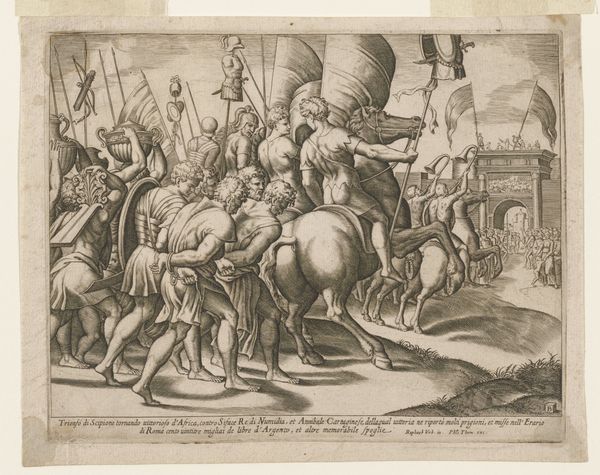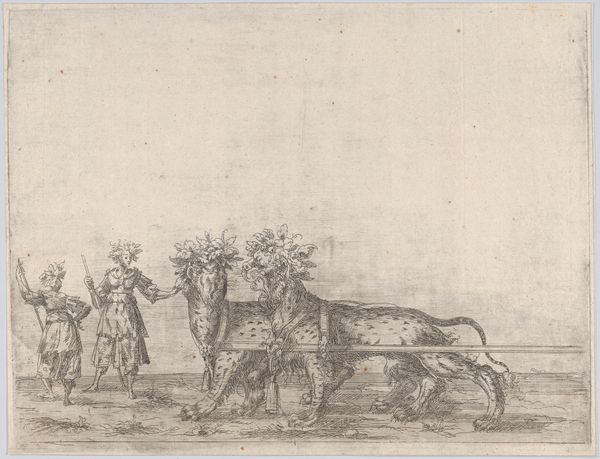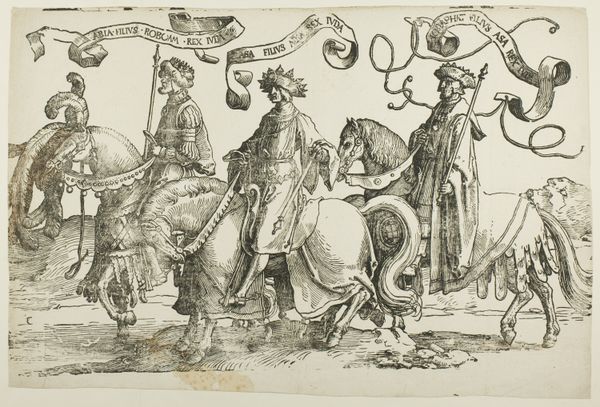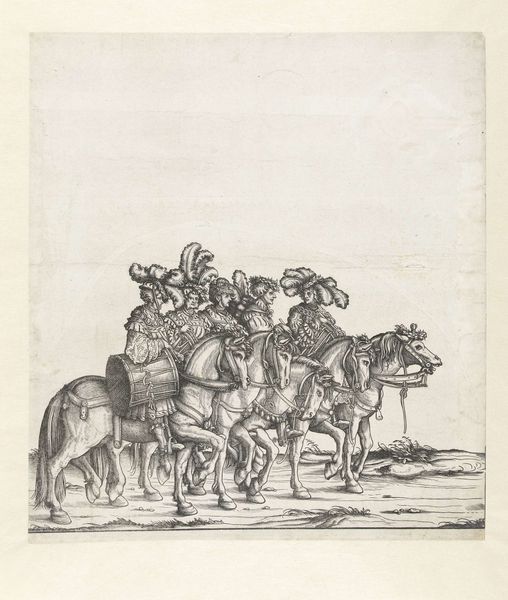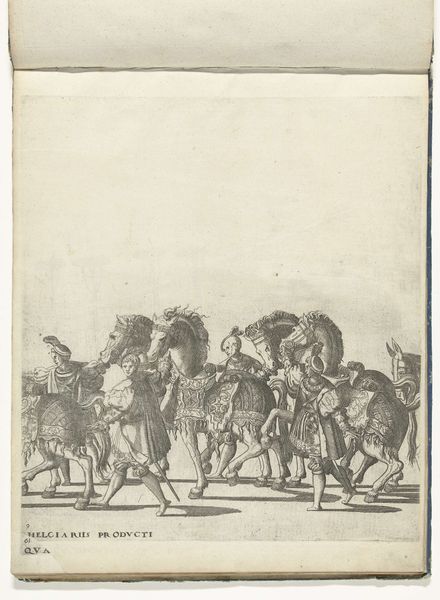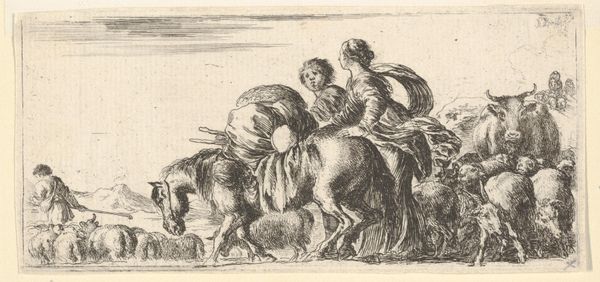
Procession, with one man playing a drum atop a horse at front, four men playing trumpets on horses at center, and one man following on foot behind 16th century
0:00
0:00
drawing, print, engraving
#
drawing
#
narrative-art
# print
#
11_renaissance
#
horse
#
men
#
history-painting
#
engraving
Dimensions: Sheet: 6 1/2 in. × 17 in. (16.5 × 43.2 cm) Plate: 6 1/8 × 15 1/2 in. (15.6 × 39.4 cm)
Copyright: Public Domain
Editor: Here we have an anonymous 16th-century engraving titled "Procession." The fine lines of the engraving give it a delicate quality, especially considering the subject matter is a rather grand parade. What's your take on it? Curator: Looking at this engraving, I'm immediately drawn to the means of its production. Engravings like this one weren't just decorative; they were a crucial method of disseminating information and celebrating power during the Renaissance. Consider the labor involved: the skilled artisan meticulously carving the image onto a metal plate. How do you think that repetitive, detailed work informed the final aesthetic? Editor: It must have taken incredible precision and patience. Does the material – the metal plate and the ink – influence how we understand the subject, this powerful display of men and horses? Curator: Absolutely. The relative ease of reproducing engravings compared to, say, painting, allowed for wider circulation of this image. The procession then becomes a form of propaganda, readily distributed and consumed. Think about the social context: Who would have commissioned this? What message were they trying to convey through this mass-produced image of a grand procession? Was it accessible to everyone, or to a small circle of people? Editor: So the very act of creating and distributing the engraving amplifies the procession’s message. Curator: Precisely! It's about understanding how material production intersects with social power and artistic expression. It encourages you to ask if something is simply "art," or how its presence as an easily produced piece informs the narrative being portrayed. Editor: This gives me a completely different perspective. I was initially just seeing a historical scene, but now I understand how the engraving itself was a tool of the elite. Curator: Exactly. Seeing art as the result of labor, materiality, and consumption shifts the focus from aesthetic appreciation to a more critical understanding of its role in society.
Comments
No comments
Be the first to comment and join the conversation on the ultimate creative platform.
